This is Part I in a four-part series that will follow over the next several months how Room to Read develops quality children’s books in low-income countries — from initial story concept to the moment the book lands in a child’s hands. You can find all the stories on Medium, Twitter or Instagram using the hashtag #RtRBookLifecycle.
*****
One of the greatest challenges to early adoption of the habit of reading in low-income countries is a lack of high quality, age-appropriate children’s books in the local language. Room to Read’s Literacy Program responded to this need by going into the publishing business. Partnering with local talent across Africa and Asia, we provide professional development workshops to authors and illustrators on the art and science of creating quality children’s books. From these workshops and similar partnerships, we develop a diverse range of storybooks each year designed to engage early readers on their terms.
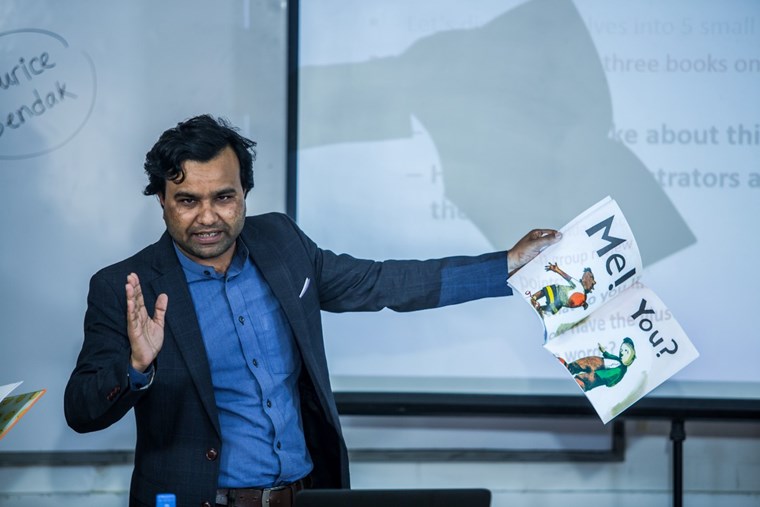 Room to Read’s annual Writers’ Workshop in Bangladesh develops talented children’s authors
Room to Read’s annual Writers’ Workshop in Bangladesh develops talented children’s authorsBy providing first and second graders in low-income countries with quality, engaging children’s books in their language and at their level, Room to Read aims to put them in the best position possible to develop the skill and the habit of reading. Not only does this help set our students up for success but it fosters much-needed children’s book publishing in the low-income regions where we operate.
Minding the gap
The process starts when Room to Read’s publishing teams across Asia and Africa conduct gap analyses to determine what books already exist in a local marketplace as well as in that region’s Room to Read libraries compared to what is referred to as the ideal book collection for a primary school student from that region. This is the collection of books that particular student could realistically have access to — either through school, Room to Read or the local marketplace — that would best help them develop the habit of reading.
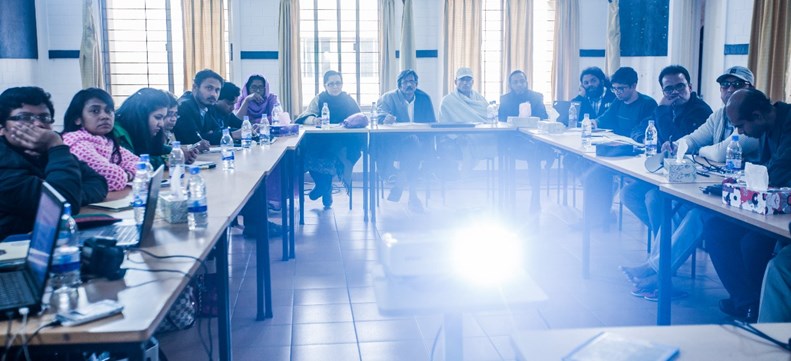 Writers’ Workshop participants in Bangladesh listen to a presentation on the history of children’s books
Writers’ Workshop participants in Bangladesh listen to a presentation on the history of children’s booksWhen Room to Read’s Bangladesh publishing team ran a gap analysis last year, they discovered their libraries didn’t have enough realistic fiction picture books — or storybooks with realistic narratives and illustrations. This informed their annual call for children’s book manuscripts last December. From 110 submissions, the team chose five writers who had never published with Room to Read before to participate in the Writers’ Workshop, which is held annually across Room to Read’s countries of operation.
“The workshop is a chance for us to develop new writers in collaboration with our established authors,” noted Saidus Saklaen, a Quality Reading Materials manager for Room to Read Bangladesh who has been leading the workshop for four years. The goal of the workshop is to develop about 12 manuscripts for publication and distribution across Room to Read Bangladesh’s libraries.
Where the Wild Things Are
Writers’ Workshop facilitator Saidus leads a discussion on story plotting
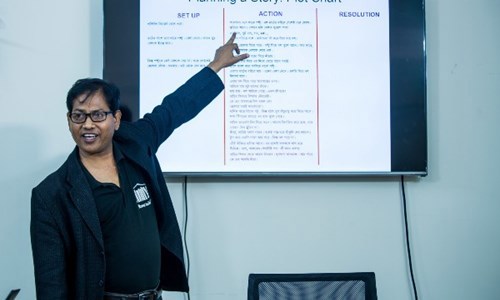
In all, fifteen writers came together in the small town of Savar near the city of Dhaka for the workshop, though they soon learned it wasn’t just about writing — they also sang, danced, and laughed together. “We wanted to create a comfortable, creative environment for the writers so they could feel inspired,” said Saidus.
In the first session he took them through the history of children’s books, using the popular American picture book Where the Wild Things Are to jumpstart a discussion about the characteristics of an engaging story. The writers devoted another session to understanding their target reader — second graders aged five to seven years old.
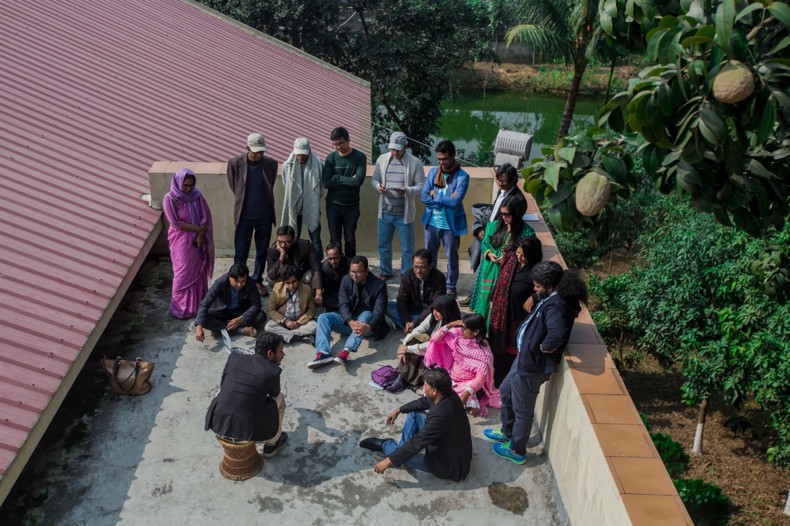
Participants in Room to Read Bangladesh’s Writers’ Workshop take their discussion of ‘Where the Wild Things Are’ outdoors
“This was a critical session,” remarked participant Reaz Ahmed. “From this point on, writers start to think like a child. We know what a child expects from a book and we feel a responsibility to meet their expectations.”
To generate story ideas, the writers brainstormed unconnected words that seemingly had no relationship to one another, then paired the words to make sentences. For instance, Abul Kalam Azad, one of the five new writers, came up with the words pillow, umbrella, buffalo, chocolate, friend, paper from which he created the sentence: Tuku needs a friend so he wrote on a piece of paper ‘I want a friend.’ From Farzana Tanni’s words — which included table, jungle, toy, and girl — she wrote the sentence: Rupu (the girl) wants a toy.
Participants discuss their plot charts in Room to Read’s Writers’ Workshop
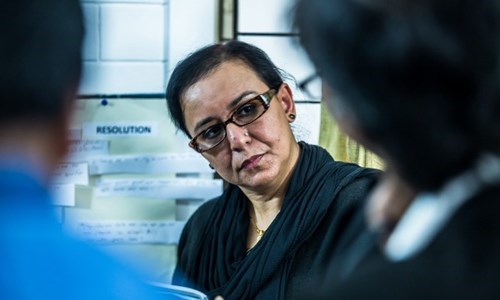 “Generally, story ideas come from experience or the imagination,” noted Associate Director Mahesh Pathiratna, who oversees book publishing for Room to Read in South Asia. “We believe the imagination is a writer’s greatest strength so we focus on exercises to inspire it.”
“Generally, story ideas come from experience or the imagination,” noted Associate Director Mahesh Pathiratna, who oversees book publishing for Room to Read in South Asia. “We believe the imagination is a writer’s greatest strength so we focus on exercises to inspire it.”
Creating 3-D characters
Next participants plotted their ideas using a plot chart that divides a story into set-up, action and resolution, and presented them to the group. “I’d written a couple of children’s books before,” said Gopal Dey, another new writer with the group, “but this exercise of creating a plot using unconnected words was very useful to me.”
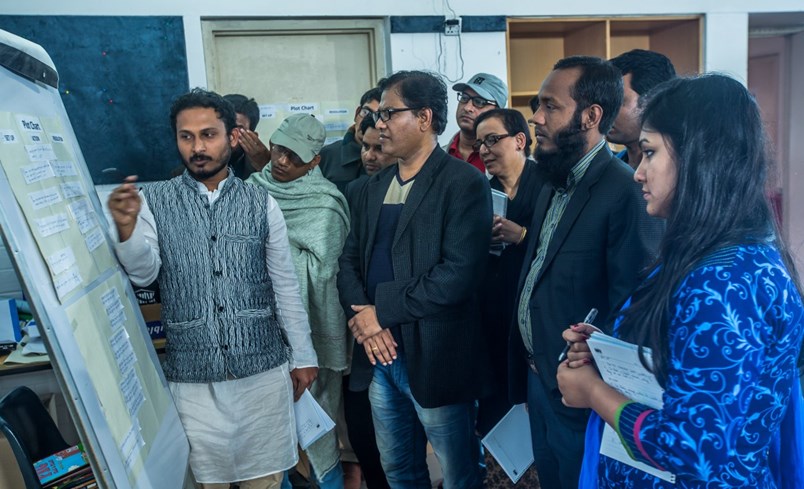
Another session focused on creating characters. “A great character has three-dimensional traits and follows an emotional plot as well as an action plot,” noted Saidus. “This makes for a much richer story.” Abul decided his character Tuku was a young, lonely boy who uses his creativity to find a friend. Farzana saw Rupu as a young girl filled with imaginative and innovative ideas that helped her figure out a way to make her grandfather smile again. Using these and other exercises, the participants crafted two stories each.
On the fourth and last day of the workshop, the Room to Read Bangladesh publishing team helped each writer edit their stories and incorporate group feedback. Of the 30 drafts created in the workshop, the team has its eye on 12 for publication.
Writer Khairul Babui has authored several children’s books for Room to Read Bangladesh

Author Khairul Babui, who has previously written books for Room to Read, said he always appreciates the experience. “I’ve attended three workshops and every time they bring something new,” said Khairul, who enjoyed crafting his story about a young boy who isn’t allowed to play cricket with the older boys and hopes to find a way to join in. “I feel like I’m getting enriched with more and more magical techniques. And I’m using my knowledge and expertise in other publications too!”
Having written for children before, Abul was surprised that a four-day workshop was able to change his mindset. “I used to write for children from my own perspective but the workshop taught me how to think like a child and how emotions play in their mind,” he said. “This helped me craft a better story for them. Room to Read opened up the world of children to me.”
Stay tuned for Part II, out this fall, when you’ll see some of the stories selected from the Bangladesh Writers’ Workshop for publication and meet the local illustrators bringing them to life in pictures.
Follow us on Medium, Twitter or Instagram using the hashtag #RtRBookLifecycle to find out when Part II is out.
Learn more about our local language book publishing efforts across Africa and Asia.



